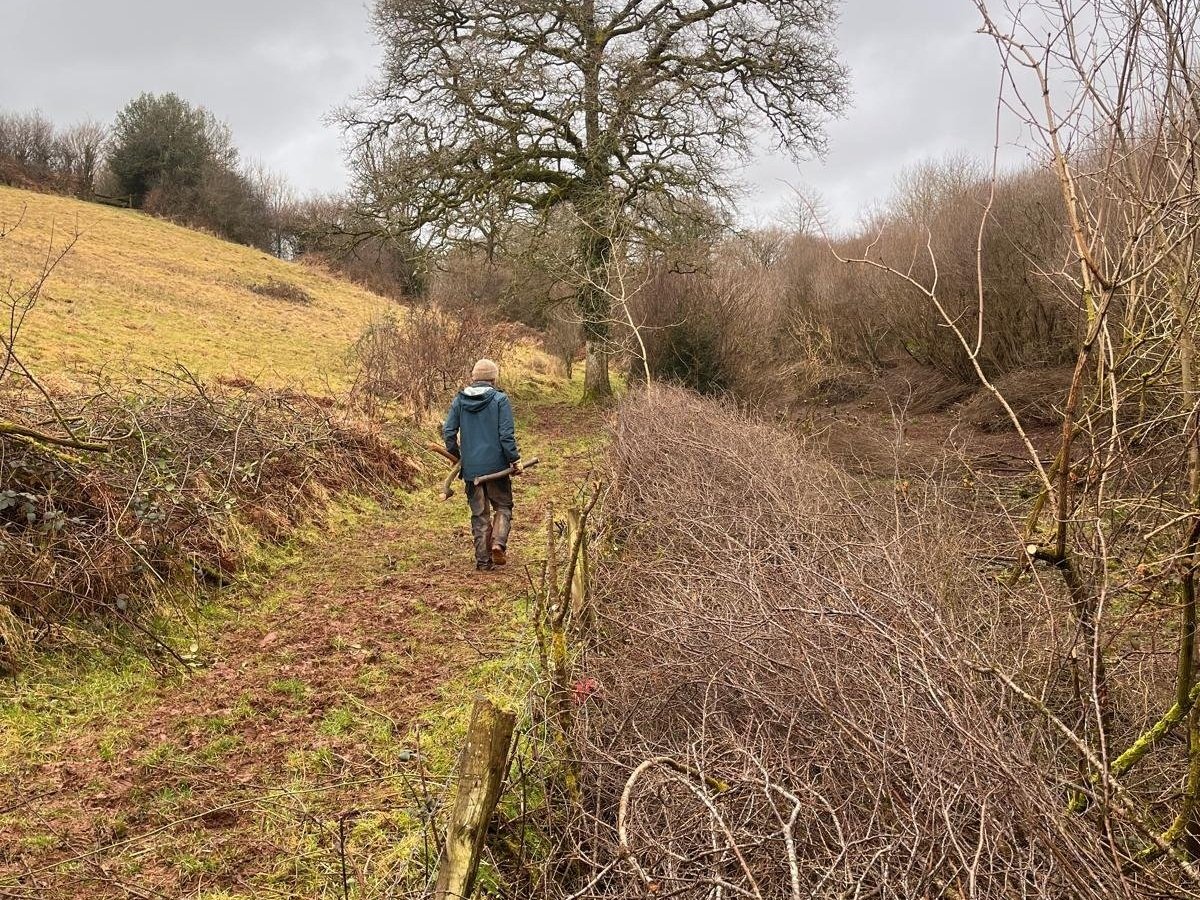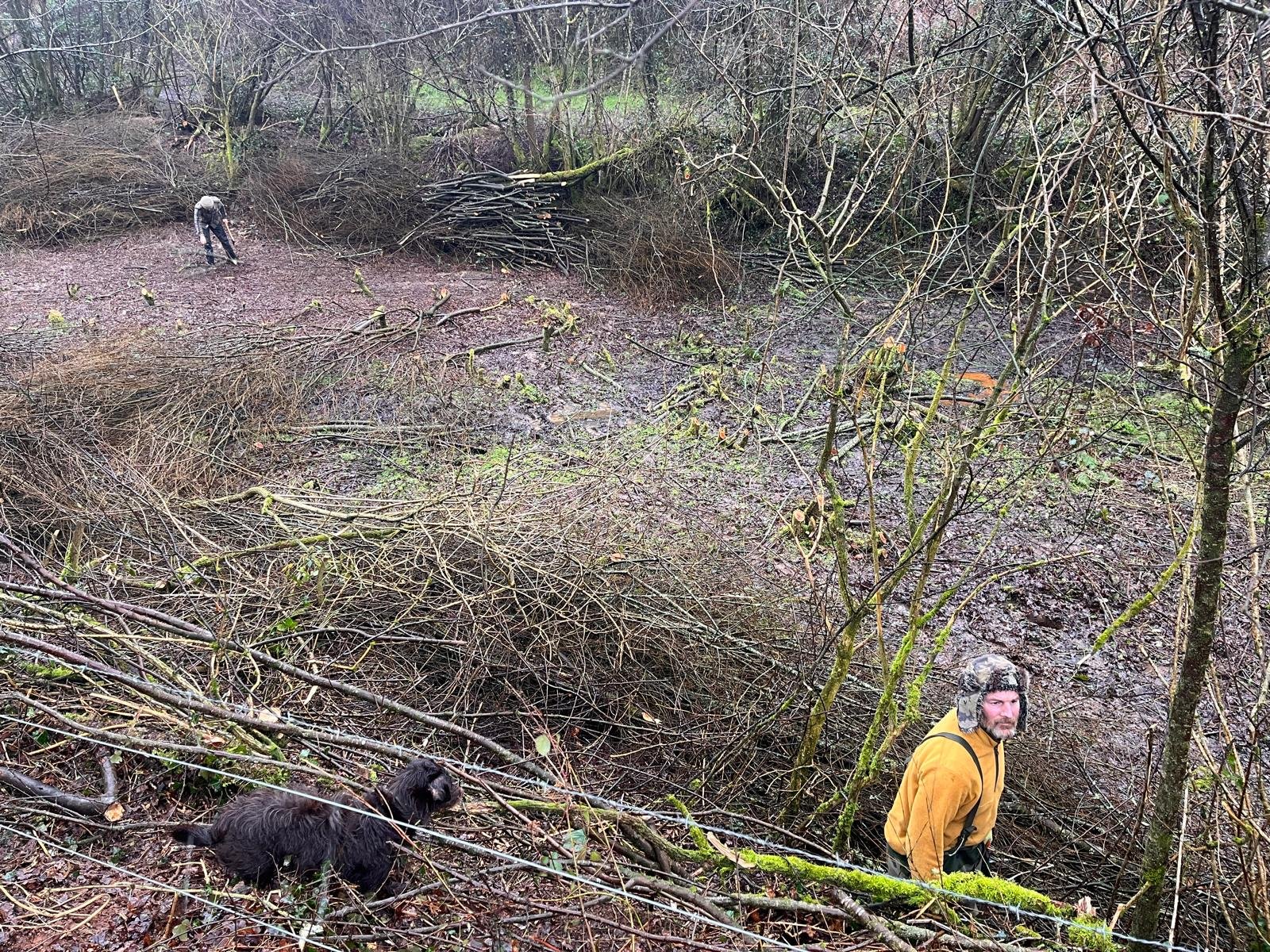Laying the Land - The Vital Role of Hedgerows
A still, clement February morning, the whisper of branches being laid, the scent of woodsmoke from the Digg & Co. Studio curling through the crisp countryside air —hedge-laying is as much an art as it is a necessity. In the heart of the English countryside, hedgelayers have been quietly shaping the land for centuries, their craft ensuring that these living boundaries continue to thrive.
At Digg & Co., our team recently took part in this age-old practice, reconnecting with the land in a deeply meaningful way. Hedgelaying is more than just a rural tradition; it’s a vital force in farming, conservation, and climate resilience. In this blog, we’ll explore why it matters and why these living threads should never be left to unravel.
Hedgelaying is an ancient craft, one that has helped shape Britain’s patchwork landscape for over a thousand years. The oldest surviving hedgerow in England to date is thought to be Judith's Hedge in Cambridgeshire, which is reputed to be over 900 years old. Originally developed as a practical method for containing livestock and marking boundaries, hedge-laying ensured that hedgerows remained dense and healthy.
Each region in the UK has developed its style, reflecting the land it serves. The Midland style, with its clean-cut stems, keeps cattle at bay, while the Devon style, tightly woven and stock-proof, provides extra sturdiness against the elements. These techniques passed down through generations, remind us that hedgerows are not static features of the countryside but dynamic, evolving elements shaped by human hands.
A Haven for Wildlife
Hedgerows are among the richest habitats in the British landscape, supporting over 2,000 species, from nesting birds and small mammals to bees and butterflies. In an era of biodiversity decline, a well-laid hedge is more important than ever.
By cutting and partially bending stems, hedge-laying stimulates fresh growth, creating dense, intertwined branches that offer better shelter and food sources. Birds like Robins (Erithacus rubecula) and Bullfinches (Pyrrhula pyrrhul) find nesting sites in the thick cover, Gatekeeper Butterflies rely on grasses at the hedge base for their caterpillars and nectar from hedge flowers for adults, while dormice and hedgehogs use them as corridors, safely navigating the countryside. Without proper management, hedges grow thin and gappy, reducing their ability to support this extraordinary diversity of life.
Autumn Hedgerow, Cornwall by Amanda Hoskin
Hedgelaying and Sustainable Farming
Beyond wildlife conservation, hedge-laying plays a crucial role in sustainable farming. Hedges act as natural windbreaks, reducing soil erosion and protecting crops. They provide shade and shelter for livestock, helping them conserve energy during harsh weather.
Hedgerows also support natural pest control by attracting beneficial insects and birds that feed on crop-damaging pests. Their deep roots help prevent flooding by slowing water runoff, while their dense structure absorbs carbon, making them a valuable ally in the fight against climate change. A well-managed hedge isn’t just a scenic feature—it’s a working part of the farm, contributing to both productivity and environmental resilience.
Hedgerows for Everyone
Even for those who aren’t farmers or conservationists, hedgerows are an essential part of our shared landscape. They define the English countryside, offering a sense of continuity and belonging. Walking beside an old hedgerow, one can see its history woven into its structure—ancient oaks standing like sentinels, blackthorn and hawthorn twisting together, wildflowers bursting into life along its base.
These living barriers also play a key role in climate adaptation. They provide crucial shade in increasingly hot summers and form natural flood defences. With Devon (along with the rest of the UK) continuing to experience wetter winters, natural flood management has become a crucial part of our way of living. Hedgerows help slow the movement of water across the land, reducing the risk of flash floods and soil erosion. For communities, they are a space of quiet refuge, connecting people with the natural world in a way that tarmac and fences never could.
Our Experience - Digg & Co. in the Thicket
In February, Digg & Co. team members took part in a hedge-laying session, working together to revive a tired stretch of hedge. As the stems were cut and laid, the hedge was given new life—thicker, stronger, and ready to flourish in the coming spring.
There’s something deeply satisfying about working with the land in such a hands-on way, using traditional tools and time-worn techniques to restore something that will outlive us all. As we warmed our hands on mugs of hot oxtail soup, pricked by blackthorn and warming up by the fire, the experience reminded us how vital this practice is—not just for the landscape, but for us as a team. It reinforced our commitment to thoughtful, sustainable landscape design—one that honours these living structures rather than replacing them.
Each time we take part, our understanding of the land deepens. With every cut and lay, we’re not only strengthening our skill set but also strengthening our connection to the countryside itself.



















